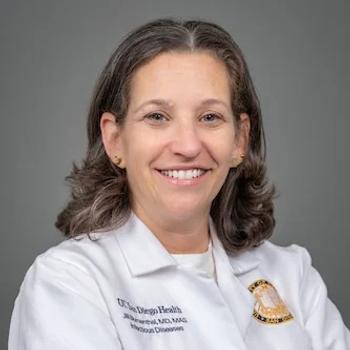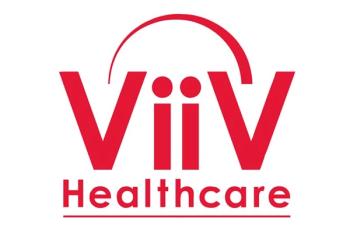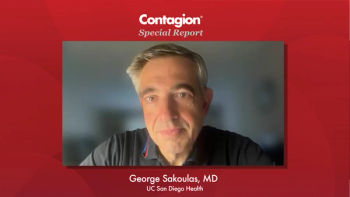
- December 2019
- Volume 4
- Issue 6
HIV Treatment Advice for Community Physicians
Experts provide community physicians treating HIV with practical advice for screening, diagnosing, and managing patients with HIV.
Joseph Eron, MD: Each of us maybe can take a minute to give advice to people who do HIV treatment but are more in the community. Ian, what do you want to say about HIV therapy?
Ian Frank, MD: Well, I think it’s important that patients be comanaged these days because as people are getting older, they often need other medications. And infectious disease providers are not as expert at administering as the antiretrovirals we’ve been talking about today. My advice to people who are comanaging HIV patients is to pay attention to the potential for drug-drug interactions.
Paul Sax, MD: Absolutely.
Ian Frank, MD: There are a lot, and sometimes they’re not easily predicted. So be careful about what you are recommending.
Joseph Eron, MD: Paul?
Paul Sax, MD: Yeah, I was going to say that very thing, so now that you’ve said it, I have to say something else. But I will say that most of the patients we follow are stable enough that they can easily be comanaged with people in general practice. The idea that only an HIV specialist can be the care provider of people with HIV is, I think, outdated. It is a little bit of a hard sell for our HIV patients who have been seeing only us for years, but there would probably be some benefits if they have a general internist as well as an HIV specialist, an ID [infectious disease] specialist.
Joseph Eron, MD: Certainly, because, as Eric said, they’ll live forever with their HIV or they’ll live as long as they were going to live. All these other things like smoking, and colonoscopies, and checking lipids, and all the kind of routine health care—CT [computed tomography] scans for lung cancer screening, and all these things. Really, comanaging makes sense. I do have this issue with my patients saying, “No, you’re good enough. You can take care of my diabetes. It’s OK.” David, what would you like to say?
W. David Hardy, MD: Well, having worked in the community for the past few years.
Joseph Eron, MD: Yes, that’s you.
W. David Hardy, MD: And not in an academic center—which is a big departure in my career—I’ve been impressed that most of the physicians, nurse practitioners, and physician assistants who work, and I’d say about a third of each in most community-based clinics now, do a really good job. Part of the reason is because of the fact that they’ve paid attention through most of their training to learn the basics of HIV. Where I’ve seen problems is when they get stuck in doing what they learned in training and do not continue to evolve.
Joseph Eron, MD: Oh, right.
W. David Hardy, MD: Meaning, for example, continuing to use boosted PIs [protease inhibitors] because that’s what they knew were the best drugs when they were doing whatever training they were doing in the academic center. But you know, to my knowledge, and my advice, is that there are so many ways to be able to continue to learn new information in HIV care. And through CME [continuing medical education] programs just like this one that are so easy to get, to access, people can keep up really well and hear new information and hear what’s going on and do primary care at the same time. In my city, the majority of HIV-positive persons are managed in the community, not in academic centers, and it actually works out pretty well.
Joseph Eron, MD: Eric?
Eric S. Daar, MD: We’ve sort of talked about it. I think that the 2 biggest issues for the primary care provider or the person who doesn’t have 20-plus years of experience is the drug-drug interaction part, which I agree with. And the other 1 is the switching part. Our job, I think—I always tell my patients who are stably suppressed—other than making sure that we manage their comorbid conditions, is to keep them up to date about what’s new, so they’re aware of what their options are. And with that, lately there have been lots of opportunities to switch. And this is where I do see mistakes made from outside clinics, because people have gotten so lackadaisical as to how easy this is, that they sometimes forget that not all patients are the same.
Paul Sax, MD: I just want to say, because drug interactions came up from 3 of us. The 2 key drugs to remember are ritonavir and cobicistat. If you see either of those 2 drugs in your patients’ HIV regimen, watch out for drug interactions. They’re clinically very significant and can be very dangerous.
Joseph Eron, MD: And remember that things that are inhaled, or sniffed, or injected can be systemically exposed.
Paul Sax, MD: Absolutely.
W. David Hardy, MD: And more and more, the boosters are not needed. That’s the important thing also, that HIV therapy has evolved to where those boosters aren’t really needed anymore.
Joseph Eron, MD: Yeah. I’ve heard people talk about polypharmacy. There’s also poly-doctoring. People have, like, 3 and 4 doctors or clinicians, not necessarily physicians.
Eric S. Daar, MD: Their pulmonologists, and orthopedics, and rheumatologists are giving them the steroids.
Joseph Eron, MD: Exactly.
Ian Frank, MD: I think we should just make sure that people hear that, because the things that are injected or inhaled are often steroids. And there are only some that can be safely coadministered with the boosting agents.
Joseph Eron, MD: OK. Well, this has been really great. The thing I would say to community providers is: test, test, test. I mean, I try to teach the residents that every admitted patient needs an HIV test if they haven’t had 1. I think that’s 1 more important step. So this has really been great. I think this has been extremely informative. Before we end the discussion, I’d like to get the final thoughts from our panelists. Any last word, Eric?
Eric S. Daar, MD: No. I think your last point is probably a really good one. I think of all the things we talked about for the person in the community who might be taking advantage of this opportunity—testing and PrEP [pre-exposure prophylaxis]. Getting a sexual history, recognizing who’s at risk, and offering it to them. Keep it easy.
W. David Hardy, MD: I think some of the basics of what we discussed—testing, getting people on treatment quickly, and then keeping them on treatment. Finding ways to make sure they stay on treatment is what’s really important. And PrEP as well, of course.
Paul Sax, MD: If you want to be optimistic about progress in medicine, look at the history of HIV treatment.
Joseph Eron, MD: Right. Yeah, absolutely. Ian?
Ian Frank, MD: I would just say, if you don’t have the cell phone number of an HIV provider near you, get 1.
Paul Sax, MD: Or an e-mail address.
Ian Frank, MD: Because sometimes problems can be easily be dealt with or questions are readily answered by just a telephone call.
Joseph Eron, MD: Thank you all for your contributions to this discussion. On behalf of our panel, we thank you for joining us, and we hope you found this Contagion® Peer Exchange® discussion to be both useful and informative.
Articles in this issue
almost 6 years ago
Keith Kaye, MD, MPH, on the Approval of Imipenem/Cilastatin + Relebactamalmost 6 years ago
The Year Ends With a Big Step in PrEP and PEPalmost 6 years ago
Robert F. Poirier, Jr. MD, on the Approval of Lefamulin for CABPalmost 6 years ago
Karam Mounzer, MD, on the Approval of Dolutegravir/Lamivudinealmost 6 years ago
Two More Agents Bolster the Arsenal Against Gram-Negative Resistancealmost 6 years ago
What's on Your Antimicrobial Stewardship "Wish List"?almost 6 years ago
Hepatitis A Outbreaks on the Rise in the USNewsletter
Stay ahead of emerging infectious disease threats with expert insights and breaking research. Subscribe now to get updates delivered straight to your inbox.






































































































































































































































































































